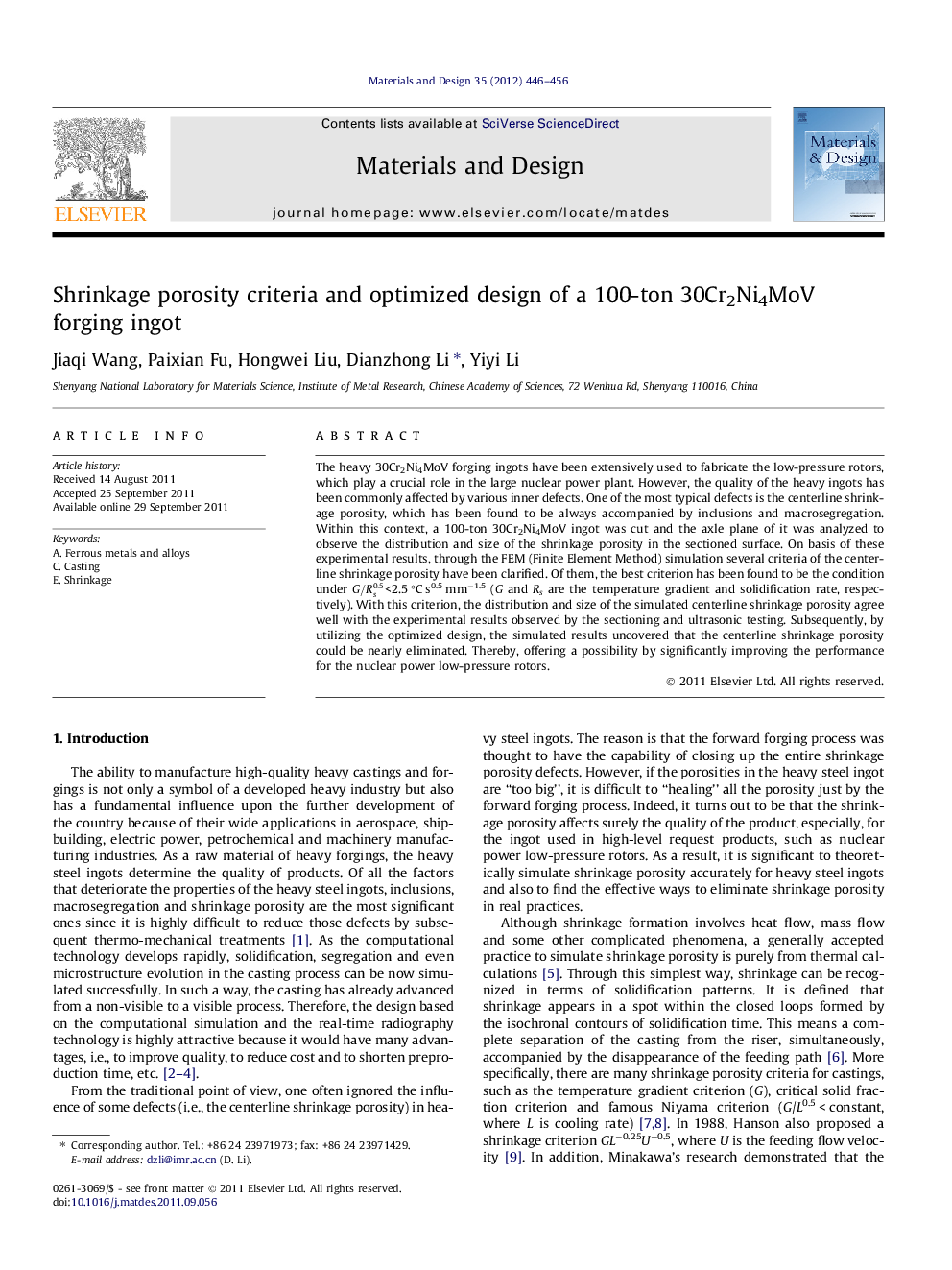| Article ID | Journal | Published Year | Pages | File Type |
|---|---|---|---|---|
| 830963 | Materials & Design (1980-2015) | 2012 | 11 Pages |
The heavy 30Cr2Ni4MoV forging ingots have been extensively used to fabricate the low-pressure rotors, which play a crucial role in the large nuclear power plant. However, the quality of the heavy ingots has been commonly affected by various inner defects. One of the most typical defects is the centerline shrinkage porosity, which has been found to be always accompanied by inclusions and macrosegregation. Within this context, a 100-ton 30Cr2Ni4MoV ingot was cut and the axle plane of it was analyzed to observe the distribution and size of the shrinkage porosity in the sectioned surface. On basis of these experimental results, through the FEM (Finite Element Method) simulation several criteria of the centerline shrinkage porosity have been clarified. Of them, the best criterion has been found to be the condition under G/Rs0.5<2.5 °C s0.5 mm−1.5 (G and Rs are the temperature gradient and solidification rate, respectively). With this criterion, the distribution and size of the simulated centerline shrinkage porosity agree well with the experimental results observed by the sectioning and ultrasonic testing. Subsequently, by utilizing the optimized design, the simulated results uncovered that the centerline shrinkage porosity could be nearly eliminated. Thereby, offering a possibility by significantly improving the performance for the nuclear power low-pressure rotors.
► A 100-ton 30Cr2Ni4MoV ingot has been sectioned experimentally in order to obtain the best simulation model. ► Various shrinkage porosity criteria for the ingot have been analyzed. ► In terms of the experimental data, a proper shrinkage porosity criterion for large steel ingots has been proposed. ► An optimized design has been proposed to successfully eliminate the centerline shrinkage porosity of the heavy ingot.
